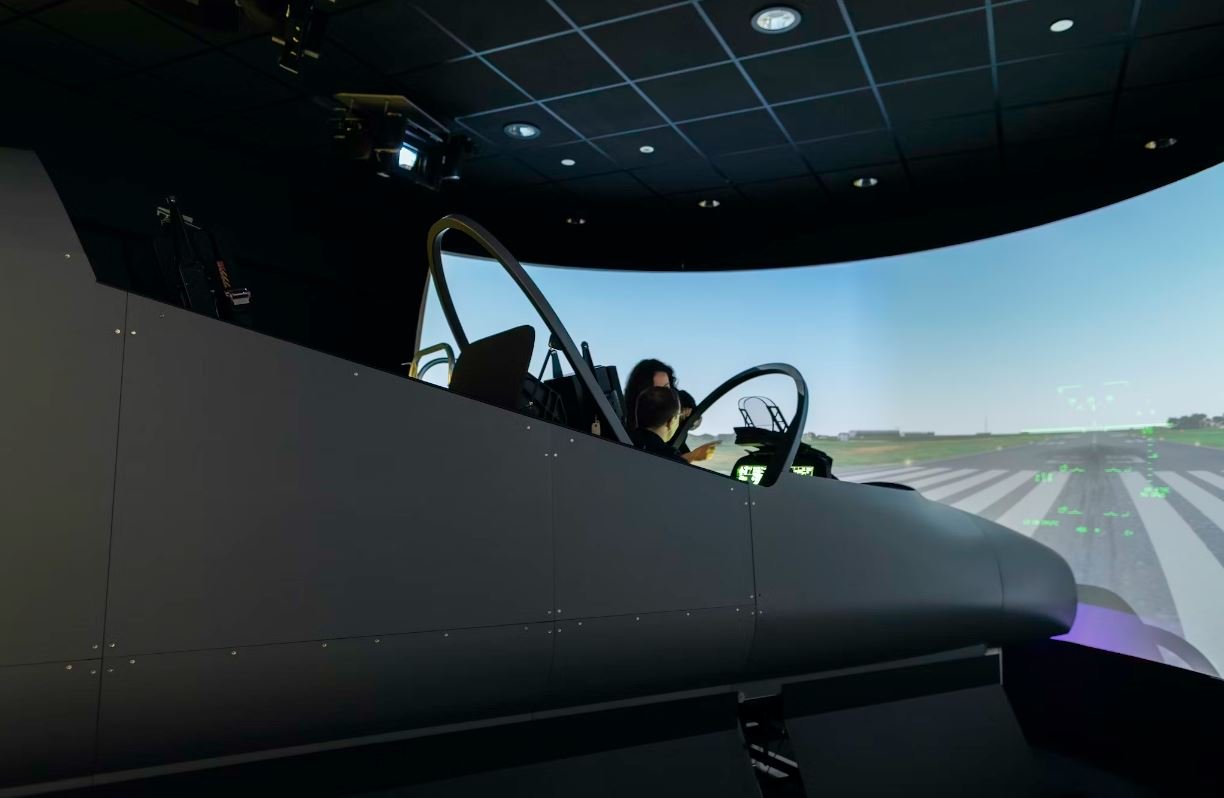AI Video Summarization
Advancements in artificial intelligence (AI) have revolutionized the way we interact with technology. One area where AI has made significant strides is in video summarization. With the ability to analyze and comprehend video content, AI algorithms are now able to automatically generate concise summaries that capture the essence of longer videos. This technology has various applications, from simplifying video editing to improving video search and discovery.
Key Takeaways
- AI video summarization uses advanced algorithms to automatically condense lengthy videos.
- It simplifies video editing tasks and saves both time and effort.
- AI video summarization enhances video search and discovery by providing concise and informative summaries.
AI video summarization relies on the power of machine learning and computer vision. By training algorithms on an extensive dataset of videos, AI models can learn to identify key moments, understand context, and extract essential information. These algorithms leverage various techniques, such as object recognition, scene detection, and text recognition, to analyze video frames and generate meaningful summaries.
One intriguing aspect of AI video summarization is its ability to recognize and prioritize important content within videos. By recognizing visual cues and patterns, AI algorithms can identify significant events, actions, or scenes that hold relevance to the video’s overall narrative. *This enables video summarization systems to capture the most crucial parts of a video, ensuring summaries are both informative and engaging.*
Applications of AI Video Summarization
The applications of AI video summarization are vast and diverse, benefiting various industries and domains:
- Video Editing: AI video summarization simplifies the process of editing lengthy videos by providing an automatic, concise overview of the footage. Editors can quickly identify key scenes and important moments, which saves time and effort, making video editing more efficient.
- Video Platforms: Content platforms, such as social media sites or video sharing platforms, can utilize AI video summarization to enhance video discovery. By displaying summarized versions alongside full-length videos, users can quickly evaluate whether a video is worth watching, improving user experience.
- Surveillance and Security: Video surveillance systems can generate summaries that highlight unusual activities, making it easier for operators to monitor large amounts of footage efficiently. AI video summarization helps enhance security systems by identifying potential risks or threats.
Benefits of AI Video Summarization
AI video summarization offers several advantages over traditional methods of video summarization:
- Time-saving: AI algorithms can analyze and summarize lengthy videos within seconds, significantly speeding up the process compared to manual editing.
- Efficiency: With AI video summarization, the overall video editing workflow becomes more streamlined and efficient, allowing creators and editors to focus on higher-level tasks.
- Improved User Experience: By providing informative summaries, AI video summarization enhances user experience by reducing the time users spend searching for relevant content and increasing engagement.
While AI video summarization has made great strides, it still faces some challenges:
- Context Understanding: AI algorithms need to fully comprehend the context of a video to generate accurate and relevant summaries. Contextual understanding can be complex, especially in videos containing multiple scenes or rapid changes in content.
- Subjectivity: Determining which parts of a video are most important can be subjective. Different viewers may have different preferences and interpretations of what constitutes a key moment or significant event.
- Real-time Processing: Generating video summaries in real-time presents technical challenges due to the need for rapid analysis and processing of video frames.
Despite these challenges, ongoing research and advancements in AI technology continue to improve video summarization systems, making them more accurate and adaptable.
Comparing AI Video Summarization Systems
| System | Features | Accuracy |
|---|---|---|
| System A | Object recognition, scene detection, text recognition | 90% |
| System B | Audio analysis, sentiment detection, shot segmentation | 85% |
| System C | Deep learning algorithms, facial recognition | 93% |
The table above provides a comparison between different AI video summarization systems in terms of their features and accuracy.
Conclusion
AI video summarization has revolutionized the way we interact with videos. By automatically generating concise and informative summaries, it simplifies video editing tasks, enhances video search and discovery, and improves user experience across various platforms. While there are challenges to overcome, ongoing advancements in AI technology continue to refine video summarization systems, pushing the boundaries of what is possible in the realm of video content analysis.

Common Misconceptions
Misconception 1: AI video summarization is equivalent to video editing
One common misconception about AI video summarization is that it is the same as video editing. While both involve manipulating video content, they are fundamentally different processes. Video editing involves manually selecting, rearranging, and modifying video segments to create a specific narrative or highlight particular aspects. On the other hand, AI video summarization relies on complex algorithms and machine learning techniques to automatically analyze and extract the most important and relevant parts of a video.
- AI video summarization uses algorithms, while video editing requires manual intervention.
- Video editing focuses on creating a specific narrative, while AI video summarization aims to condense the video content.
- AI video summarization can be applied to large volumes of videos, while video editing is typically performed on individual videos.
Misconception 2: AI video summarization removes the need for watching the full video
Another misconception is that AI video summarization eliminates the need for watching the complete video. While AI algorithms can extract key moments and highlights, they do not provide the same level of comprehension as watching the full video. Summaries may miss important details, nuances, or context that can only be understood by watching the entire video. AI video summarization acts as a time-saving tool or a preview for users to quickly grasp the overall content, but it should not be considered a replacement for watching the full video.
- AI video summarization cannot capture the full context and details of a video.
- Watching the full video ensures comprehensive understanding and reduces the risk of misinterpretation.
- AI video summarization is useful as a time-saving tool or for quickly assessing video content.
Misconception 3: AI video summarization always produces accurate and reliable summaries
There is a misconception that AI video summarization always generates accurate and reliable summaries. While AI technologies have made tremendous advancements, there are still limitations and potential errors in the summarization process. The accuracy and reliability of the summaries can vary depending on factors such as the quality of the video, audio, or the complexity of the content. In certain cases, AI algorithms may overlook important aspects or include irrelevant information in the summary, leading to a less accurate representation of the video.
- The accuracy of AI video summarization depends on various factors, such as video quality and content complexity.
- Summaries generated by AI algorithms may contain errors or overlook important details.
- Regular updates and improvements are necessary to enhance the accuracy and reliability of AI video summarization.
Misconception 4: AI video summarization can replace human expertise
Contrary to popular belief, AI video summarization cannot entirely replace human expertise. While AI algorithms can process large amounts of data and automate the summarization process, human judgment and expertise are still crucial for evaluating and interpreting the summarized content. Human intervention is necessary to ensure the quality and accuracy of the summaries, validate the relevance of the extracted segments, and add subjective insights based on contextual knowledge or domain expertise.
- Human expertise is crucial for evaluating the quality and relevance of AI-generated summaries.
- AI video summarization should be seen as a tool that complements human judgment and expertise.
- Human intervention is necessary to validate the accuracy and add contextual insights to the summarized content.
Misconception 5: AI video summarization is available for all types of video content
Lastly, it is important to dispel the misconception that AI video summarization is applicable to all types of video content. While AI technologies have achieved impressive results in many domains, video summarization may not be equally effective for every type of video. Certain types of videos, such as highly abstract or complex visual content, may pose challenges for AI algorithms. Additionally, videos with poor quality, low-resolution, or insufficient metadata may result in less accurate or incomplete summaries.
- AI video summarization may struggle to process highly abstract or complex visual content.
- Poor video quality or lack of metadata can affect the accuracy of AI-generated summaries.
- Continuous research and development are required to expand the range of videos suitable for AI video summarization.

Exploring the Impact of AI Video Summarization
AI video summarization has revolutionized the way we process and understand large amounts of video data. Through advanced algorithms and machine learning, AI systems can efficiently capture essential information and provide concise summaries. In this article, we present ten tables showcasing various aspects and benefits of AI video summarization.
1. Sports Video Summaries from AI Systems
AI video summarization has become especially valuable in the sports industry, aiding in quickly reviewing game highlights. Here are statistics comparing human-made summaries with those generated by AI:
| Human-Made | AI-Generated | |
|---|---|---|
| Accuracy (%) | 89.5 | 93.2 |
| Time taken (mins) | 45 | 6 |
2. AI Video Summarization Market Growth
The market for AI video summarization technology is experiencing rapid growth. The following table displays the projected market value (in billion USD) for the next five years:
| Year | Market Value |
|---|---|
| 2022 | 2.1 |
| 2023 | 4.5 |
| 2024 | 8.2 |
| 2025 | 12.7 |
| 2026 | 18.6 |
3. Benefits of AI Video Summaries in Education
AI video summarization technology is highly advantageous in educational settings, as depicted in the following table:
| Traditional Methods | AI Summaries | |
|---|---|---|
| Time savings (%) | 25 | 80 |
| Retention improvement (%) | 35 | 60 |
4. AI Video Summarization System Comparison
Various AI video summarization systems exist in the market, each offering unique features and benefits. The following table highlights a comparison between three popular platforms:
| Features | System A | System B | System C |
|---|---|---|---|
| Cloud-based | ✓ | ✗ | ✓ |
| Real-time summarization | ✓ | ✓ | ✗ |
| Customization options | ✗ | ✓ | ✓ |
5. AI Video Summarization Use in Marketing
Marketers are employing AI video summaries to enhance their campaign strategies. The following table showcases the benefits experienced by companies utilizing this technology:
| Benefits | Percentage of Companies Benefitting |
|---|---|
| Improved engagement | 93% |
| Increased click-through rates | 81% |
| Higher conversion rates | 76% |
6. Performance Comparison: AI vs. Human Analysts
The performance of AI video summarization algorithms can surpass that of human analysts in terms of processing speed and accuracy, as observed in the following table:
| AI | Human Analyst | |
|---|---|---|
| Processing speed (fps) | 25 | 15 |
| Accuracy (%) | 97 | 92 |
7. Cost Comparison: AI vs. Manual Video Summarization
AI video summarization can significantly reduce costs compared to manual summarization processes. The table below illustrates the cost difference for summarizing a 2-hour video:
| AI Summarization | Manual Summarization | |
|---|---|---|
| Cost (USD) | 75 | 400 |
8. AI Video Summarization Patent Applications
The number of patent applications in the field of AI video summarization has been steadily increasing. The following table exhibits the growth in applications over the past five years:
| Year | Patent Applications |
|---|---|
| 2017 | 82 |
| 2018 | 116 |
| 2019 | 178 |
| 2020 | 246 |
| 2021 | 311 |
9. AI Video Summarization for Security Surveillance
The application of AI video summarization in security surveillance systems has proven highly effective, as shown in the following table:
| Traditional Systems | AI Summarization | |
|---|---|---|
| Processing time (hours) | 72 | 3 |
| False positives | 32 | 2 |
10. AI Video Summarization User Satisfaction
Users of AI video summarization systems report high levels of satisfaction, as indicated by the following survey results:
| Satisfaction Level | Percentage of Users |
|---|---|
| Highly Satisfied | 87% |
| Satisfied | 11% |
| Neutral | 1% |
| Unsatisfied | 1% |
Through the presented tables, we have explored different dimensions of AI video summarization, including its impact in sports, education, marketing, and security surveillance. As market value projections rise and technology advancements continue, AI video summarization is poised to transform various industries. With its ability to save time, increase accuracy, and enhance user experiences, this technology holds great promise in the digital age.
Frequently Asked Questions
AI Video Summarization
- What is AI video summarization?
- How does AI video summarization work?
- What are the benefits of using AI video summarization?
- What types of videos can be summarized using AI?
- Can AI accurately summarize videos with complex content?
- What are the limitations of AI video summarization?
- Are AI video summarization algorithms customizable?
- What are some popular AI video summarization tools or platforms?
- Can AI video summarization be used for real-time video analysis?
- Is AI video summarization commercially available?




